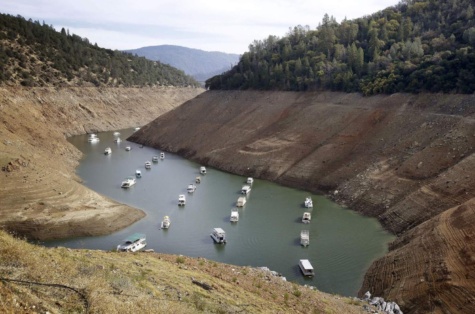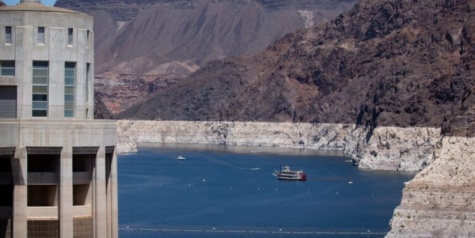
Shayna Sparks | News Editor
October 20, 2021
As the California water measurement year comes to a close, emerging reports paint a dire image for California’s future. According to the Western Regional Climate Center, average precipitation in California is 23.58 inches a year. This year, precipitation totaled less than 12 inches.
Due to this widespread low rainfall, much of California is facing dangerous drought conditions. 87.2% of the state is classified as being in extreme drought, and 45.7% is in exceptional drought, which is the highest classification of drought severity. Orange County is currently in severe drought, which impacts crops and other plants and causes longer and more dangerous fire seasons.
In response to worsening drought conditions, Governor Gavin Newsom asked that Californians cut water usage by 15% in order to conserve water and prepare for the possibility of another dry year. Previously, drought emergency status applied to 50 counties in the state. On Tuesday, October 19, he added eight counties, including Orange and Los Angeles counties, to put the entire state under emergency status. Although they haven’t yet, government officials may soon have to impose a conservation mandate to ensure that Californians reduce water usage.
“My grandma lives in Minnesota and they have [a conservation mandate] there where they can’t water their grass, only once a week,” senior Brenna Lynch said. “I think we should definitely do that here because otherwise it’s going to get too bad and too expensive. Even if it’s not drastic, we at least need some change.”
So, what does all of this mean for the future of California? The main question is not what is happening now, but what conditions will look like in a year or two. Will we have enough water left in reservoirs, or will we face shortages?
Many organizations are now trying to monitor and predict precipitation levels in order to calculate how much water we will have in the future. Although precipitation in northern California tends to stay consistent, precipitation in southern California varies from year to year. The National Oceanic and Atmospheric Administration recently reported evidence of La Niña conditions in the Pacific Ocean, which usually signifies a dry year for southern California.

In addition to possible drought danger in California, out-of-state water sources are also depleted. Nevada’s Lake Mead, which supplies water to multiple states in the western United States, is measuring at record low levels. Climate change is exacerbating the situation: with higher temperatures, precipitation is evaporating faster, and we use more water overall. If this drought continues to progress, we may have to take drastic measures in order to conserve water and keep California running.
“If ignoring the drought was going to magically create a solution, it would have already happened,” senior Ella Lawrence said. “Taking five minute showers and turning off the water while you brush your teeth is helpful, but it will not end the drought.”
The solution to the drought: increasing awareness. The sooner people know about the problem and care enough to fix it, the sooner we can improve California’s future.

Leave a Reply